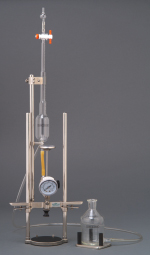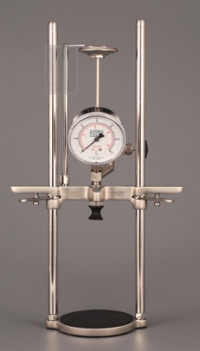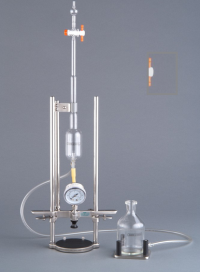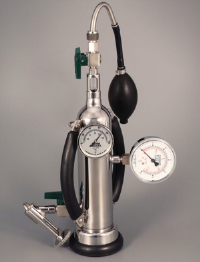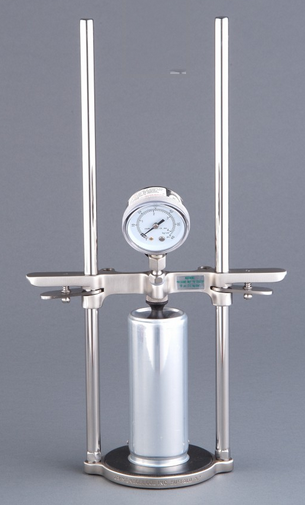
Part #11000 Zahm Modified Piercing Device
Hãng sản xuất: Zahm & Nagel Vietnam
Part #11000 Zahm Modified Piercing Device, Part #11000 Zahm Nagel Vietnam , Zahm&Nagel Vietnam , ZahmNagel Vietnam, Zahm & Nagel Vietnam
Warning: Eye protection must be worn while operating this instrument.
Note: Before using this instrument it should be tested for any gas leaks that may occur at the various connections. This may be accomplished by pressurizing the instrument and applying a soapy water solution to the various connections. A bubble will form if any leaks are occurring. The instrument may also be pressurized, submerged in a glass tank of water, and leaks detected in this manner.
Operation:
1. Place the bottle or can to be tested on the base pad (5022) and lower the cross bar (5024) to the point where the rubber seal (5045) just touches the top of the container The cross bar is lowed by depressing the lock plates (5026) on each side of the cross bar and pushing downwards.
2. With the lock plates still depressed, push rapidly downward with both hands on the cross bar until the container is pierced.
3. Release the lock plates. The cross bar will remain locked in place with the rubber seal compressed to prevent leaking at the point of piercing. Be careful not to trip the lock plates after piercing as only a slight upward pressure on the lock plates will release the cross bar.
4. Hold the instrument at the bottom of the base with the right hand while the left hand holds the guide rod (5017). Shake the instrument with a rapid back and forth motion until maximum gauge pressure has been obtained. Record this pressure if volumes of CO² gas will be determined.
5. Bleed off the pressure in the container by opening the Whitey valve (5056).
6. Depress the lock plates and raise the cross bar high enough to remove the container.
Determination of Volumes of CO² Gas
Quick disconnect of the PAT unit for carbonyl analysis (achieved by bubbling the carbonyl into a gas washing bottle containing 0.25% 2.4 dinitrophenylhydrazine in 2/n HCl to form carbonyl derivatives, which can be analyzed by HPLC).







 Mr. Trí
Mr. Trí